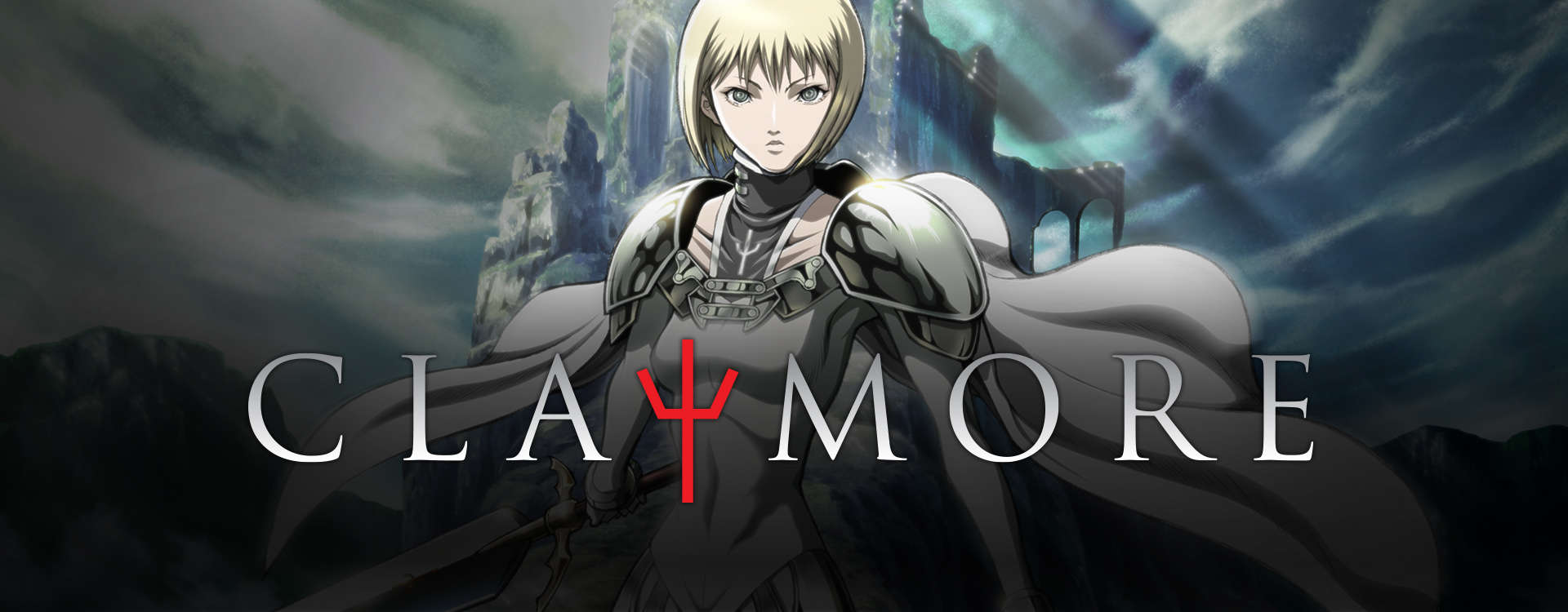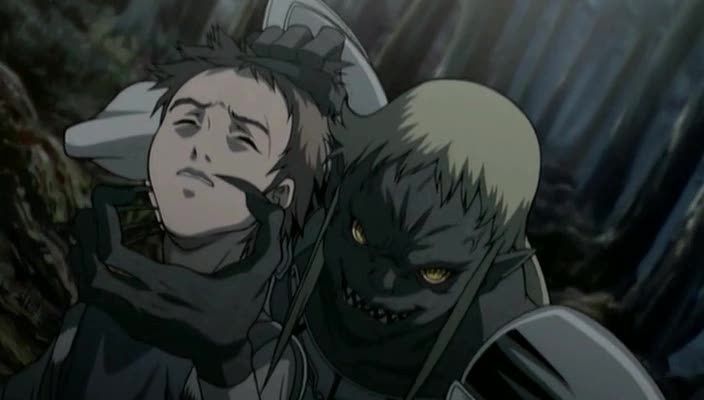Examining Claymore as Gritty Fantasy
As Helen Young describes it, gritty fantasy contains glorified sex and violence (sometimes together), blurred morality, "minimalized" magic, continuing trends of whiteness and a "realistic" medieval setting. As I have in previous posts, I've chosen to use this lens to approach Japanese media, particularly anime and video games.
Today's an anime day. Based on the manga by Norihiro Yagi, "Claymore" is a twenty-six episode series from 2007 that follows the adventures of Clare, a member of a specialized organization of half-monster female warriors known as the titular Claymores, as she slays human-eating monsters known as Yoma. Is it gritty fantasy? We'll examine each part of Young's criteria to find out.
Glorified Sex and Violence
The craziest thing happened when I started watching "Claymore." I sat down, saw the main character was a woman, and waited for the "boob shots" to ensue. None came. None. Don't get me wrong, the female characters all have the same body type, and they all have breasts. Maybe the shots were there, and I missed them, but they never seemed to be the emphasis. Body shots normally focused on the torso, legs, or arms during action sequences. Reaction shots explicitly showed the neck up. Large capes, shadows, and shoulder pads deemphasized feminine figures. The entire main cast was female, and they were all FULLY clothed. When nudity occurred, it was either a) a no longer human creature, b) after a transformation sequence, and/or c) very non-sexual and mostly censored. It was actually shocking. Aside from the fact that they compare Awakening, a process where the Claymores use too much Yoma power and become fully Yoma or "Awakened", to sexual pleasure due to how hard it is to resist, the series doesn't really meet the glorified sex trope.
 |
| (Clare being slashed across the chest while holding her right arm) |
However, glorified violence is another story. We constantly see Claymores losing limbs, reattaching them, and losing them again, being cut in half, being stabbed, stabbing others, being beheaded...you get the picture. Not to mention we get to see Yoma actually eat very clearly drawn human organs. It's a bit much sometimes. There's blood in literally every episode, and I'm pretty sure there was limb loss in all but two or three. So, definitely violence. Lots of it.
Blurred Morality
At first, "Claymore" seems pretty black and white: Yoma eat people and are bad, Claymores kill Yoma and protect humanity. However, the Claymores themselves are half Yoma, and ultimately become Yoma if not careful. Because of this lack of full humanity, the townspeople generally distrust and are fearful of or hateful towards the Claymores. Clare, the protagonist, becomes a Claymore by choice, not because she has someone to save, but because she seeks revenge. Additionally, the Organization, employer and creator of the Claymores, are suspected and hinted at creating the terrifying Yoma in the first place. Beyond this, some Claymores enjoy killing others of their order and humans for sport. With this general list in mind, I think it's safe to say the sense of good and evil is blurred in this series.
"Minimalized" Magic
Magic is never explicitly named in Claymore. There are Yoma, and the Claymores channel Yoma-related power. However, Awakened Beings generally resemble dragons or other stereotypical fantastical beasts. To this extent, there is a decent amount of "magic" within the series. However, the general emphasis is on swordplay and other melee techniques rather than "spellcasting". In comparison, to Tolkien, as the standard for gritty fantasy essentially is, "Claymore" has "minimalized" magic.
Whiteness
Every character in "Claymore" is Tolkien white. The Claymores all have super pale skin, silver blue
eyes, and white to blonde hair, with darker hair being attributed to failed merging with Yoma and thus, weaker powers. Some even end up with elf ears after obtaining their Yoma powers. The source material explains that this hyper-lightness within the Claymores is due to their merging with Yoma causing them to lose all pigmentation, however, they're still all white, as are the background characters. So, unfortunately, Claymore runs with the long passed down torch of habits of whiteness.
(White warriors wearing white)
|
"Realistic" Medieval Setting
 |
| (Various Claymore crests) |
The villages are those seen in every medieval fantasy anime ever; nothing to write home about. Townspeople are depicted living simply and relatively isolated from other towns. The Claymores wear armor and each has a personal crest, like a medieval house would. Essentially, the physical setting and attire presented in "Claymore" is a conglomerate of medieval fantasy stereotypes. From the little setting provided, the world of "Claymore" essentially follows the believed standard for the medieval period.
Bonus Round: Raki
Raki is Clare's young male companion, who insistently follows her around after she kills the Yoma that slayed his entire family. Raki is also completely useless, despite the fact he is the only named male character. Actually, he's basically the only male character (aside from generic townsfolk), until the last few episodes. All he really does is cry and get in the way. And when he tries to help, he still gets in the way. The kid finally learns to use a sword in the last few episodes, and he doesn't even end up fighting (he literally gets in the fetal position and cries). We know he means well, and that he just loves and admires Clare for saving him, but it gets annoying after awhile. The point is, the dynamic between Raki and Clare is basically a flipped damsel-in-distress scenario. Raki's lack of traditional masculinity, especially in a fantasy setting, is an anomaly and a very interesting feature of the series.
(Raki being held captive for the first of many times)
|
Verdict
Aside from having super powerful women and Raki, "Claymore" very well fits the Gritty Fantasy genre, at least as it is defined by Helen Young. It possesses hyper-violence, unclear good and evil, "less" magic, (unfortunately) whiteness, and what the general public sees as a realistic medieval setting, and still, there are even more intricacies that complicate and critique the genre than I could mention in the span of a blog post. If you're okay with violence and can tolerate terrible series finales, it's worth a watch.
-Caroline Ogden





It honestly sounds like Claymore is a good example of gritty fantasy. All of the elements seem to be present, and it definitely seems like a story worth watching. That being said, how terrible a series finale are we talking? Like, Evangelion everyone including all of the dead and the penguin clapping and giving the main character congratulations bad, or the story is clearly unfinished bad?
ReplyDelete